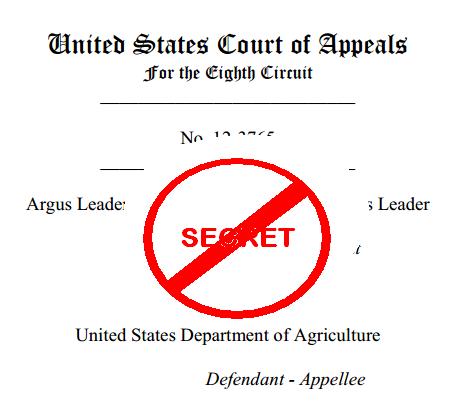Another Overlooked Effect of Judicial Retention Elections
In an earlier post, I stated my main objections to amending the Minnesota Constitution to provide for retention elections in judicial races. In summary, I believe this change will make the process more politicized. Since the stated reason for the amendment seems to be making judicial selection less political, this means that the amendment will make the problem worse rather than better.
An Iowa attorney who took one of my CLE programs identified another issue, that I probably wouldn’t have noticed. Lawyers in Minnesota are governed by the Minnesota Rules of Professional Conduct. These are essentially identical to the rules adopted in most other states, including Iowa. Rule 8.2 quite reasonably states that a lawyer must not knowingly or recklessly make a false statement concerning the qualifications or integrity of a judge or candidate for judicial office.
Again, this rule is quite reasonable. We don’t want the lawyers of the state running around falsely stating that Judge _____ is a crook. If he or she is really a crook, then I think that most would agree that we ought to make that fact known. And both this rule and the First Amendment make clear that we are allowed to say so. We are only prohibited from making false statements that the judge is a crook. Since we have very few crooks serving as judges, I have never been called upon to say that one of them was a crook. But if one of them actually were a crook, then it is both my right and my duty to point this out.
But I also need to be careful as to what I say, because if I provide false information, I will suffer the consequences under this rule.
This is how it should be. But there is indeed a restriction on my free speech, and under the First Amendment, we need to be careful about imposing restrictions on speech. As we lawyers like to say, these kinds of restrictions can have a “chilling effect” on free speech: Even though I might have proof that Judge _____ is a crook, I might decide to keep my mouth shut, because it’s just not worth the risk of getting in trouble.
In Minnesota, this chilling effect isn’t really a problem, though, because we have a level playing field. Yes, there might be a chilling effect on my speech. But the other side (the people who think the hypothetical crooked judge should be re-elected) have an identical chilling effect upon their speech. They also have to be careful about what they say, because they run the risk of getting into the same trouble as me: If they say something false about the opposing candidate, they can also face discipline.
So in Minnesota, there probably is some chilling effect on speech. But at least everyone is operating under the same rules, and everyone’s speech is chilled by the same amount. In other words, it’s a level playing field.
This is not the case in Iowa, as an Iowa attorney pointed out to me. In Iowa, or any state with retention elections, the opponents of an incumbent judge have the same chilling effect on their speech that I have. If they make a statement that some judge should be removed from office, there’s the possibility that they will get in trouble, if their comments are construed as false claims about the judge’s qualifications or integrity.
But in Iowa, those in favor of retaining the judge face absolutely no risk: They are not telling you to vote against the challenger. Their only opponent is the word “no” on the ballot. It’s impossible to make a false statement about the integrity or qualifications of the word “no.” So in Iowa, if there are two sides of the debate, one side has one set of rules, but the other side has a different set of rules. The chilling effect applies only to one side. We lawyers would say that the rule is not “content neutral.” To put it in simpler terms, this is another way of saying “it ain’t fair.”
But What About Texas?
Inevitably, the proponents of retention elections will say something along the lines that if we keep our current system of contested elections, we’ll eventually “turn into Texas.” Texas judicial races are, indeed, much more politicized than they are in Minnesota. And I would probably agree that it would be a good thing if we don’t “turn into Texas” in this regard.
The problem, once again, is that the proposed amendment will make matters worse, not better. In short, we’ll turn into Texas faster if we adopt the amendment. For the reasons stated in my original post, we have a better chance of keeping the system non-politicized if we stay with the current system. The 2010 Iowa judicial elections were, in my opinion, much more political than just about any Texas race. The defeated judges called it “an unprecedented attack by out-of-state special interest groups.” They were probably right. There was an angry mob of Iowa voters running around with signs that said “NO,” presumably financed by those evil out-of-state special interest groups.
But how is an angry mob of Iowa voters carrying “NO” signs any different from an angry mob of Texas voters carrying signs with the name of an opponent?
But Minnesota won’t go the way of Texas for a completely different reason. As the former Texas Chief Justice points out, the main problem with Texas judicial elections is that the party designation is listed on the ballot. This means that voters can vote a straight ticket. Texas judicial candidates tend to ride the coattails of the presidential or gubernatorial race. In practice, this means that Republican judges are swept out of office when a Democrat carries the state, and vice versa. In Minnesota, even though judicial candidates may now seek party endorsement, the party designation, unlike in Texas, is not shown on the ballot. In other words, the voter cannot vote a straight party ticket without at least a little bit of education prior to the race.
I would oppose putting party designation on the ballot in judicial races. But as far as I know, nobody has proposed that. Keeping party designation off the ballot is what keeps us from “becoming like Texas.” The 2010 Iowa experience shows that retention elections are exactly the thing that will give us Texas-style judicial races.
Finally, I should point out one common misconception about Texas. It is true that judicial races in that state are sometimes hotly contested. You will occasionally see lawn signs supporting particular candidates, and I agree that these are a bit unseemly. But many (but not all) of these signs are actually supporting candidates for “County Judge.” Despite the name of the office, the County Judge is actually the chief executive of the Texas
county government. A more descriptive name of the position would be “chair of the county commissioners.” Other than some minor judicial functions in some rural counties, the County Judge is not a judicial officer. He or she holds a political office. Again, many (but not all) of the unseemly lawn signs are actually supporting candidates for this political office.
The retention amendment is a knee-jerk reaction to a problem that doesn’t exist. And unfortunately, it will be the very thing that brings the problem about.



